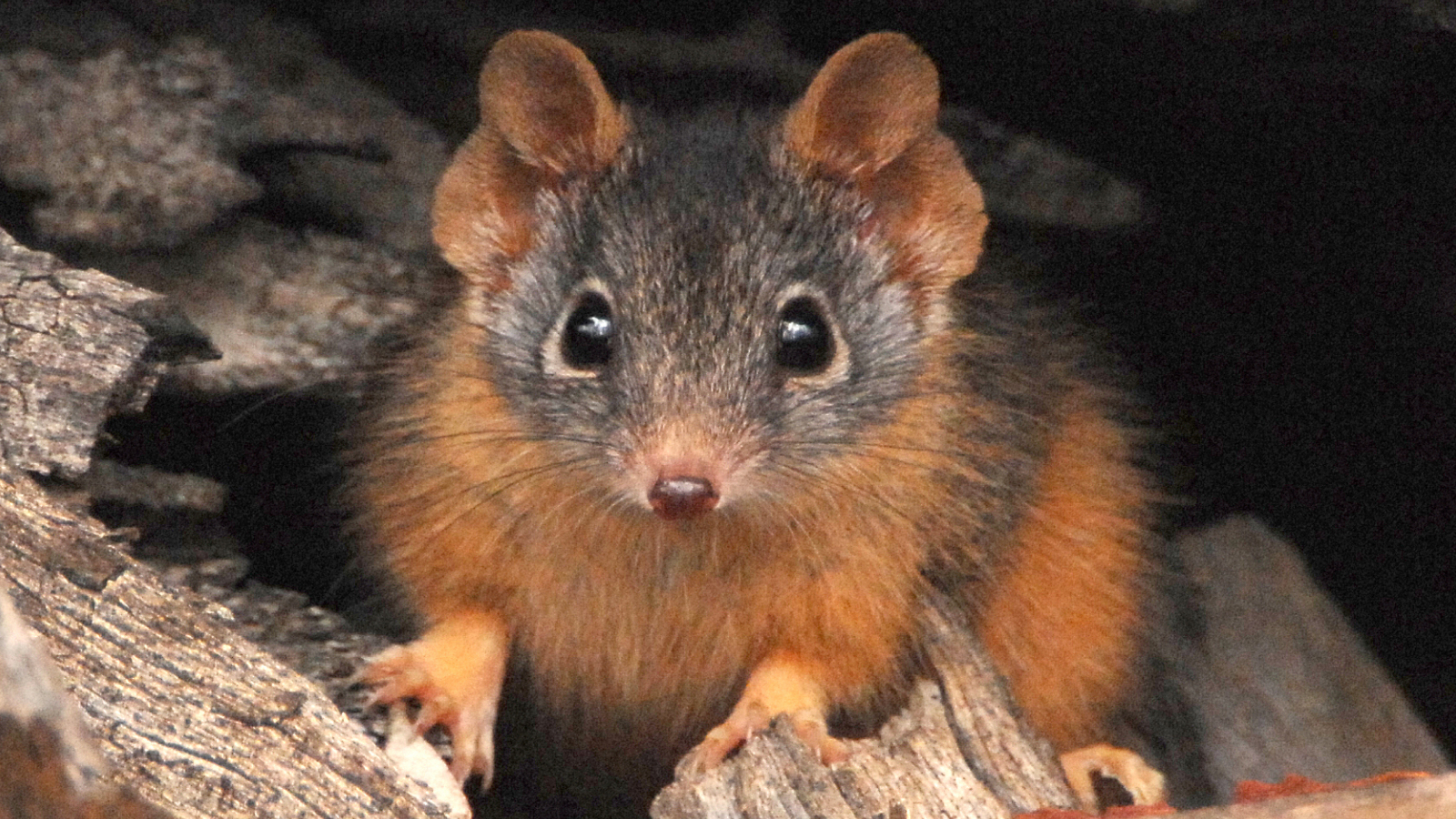
Name: Antechinus (Antechinus)
Where it lives: Australia
What it eats: Insects, spiders, centipedes and sometimes frogs and small reptiles
Why it's awesome: Antechinuses are little marsupials about the size of gerbils with a bizarre reproductive system: the males have sex until they die from organ failure.
There are 15 species of Antechinus all with the same deadly mating system. Their breeding season is a frenzied period lasting just two to three weeks. During this time, males give up sleep to have as much sex as possible, going for up to 14 hours at a time in the hope of passing on their genes. Once the breeding season ends, all the males drop dead.
Males die as a result of stress and exhaustion. During the mating window, testosterone and the stress hormone cortisol surge in their bodies. The increase in testosterone prevents them from processing the cortisol, causing organ failure and death.
Some male antechinuses survive, but this is very rare. "Males stop making sperm before the mating season and their testes disintegrate, so they are not even using energy on that during the mating period," Diana Fisher, a mammal ecologist at the University of Queensland in Australia, said in a statement in 2013. "But they can never reproduce again even if they do live."
During the mating season, sperm is stored in the epididymis and is constantly lost in urine, so they have a very brief window to mate before infertility and death.
The antechinus mass mortality event provides an opportunity — fresh food for the pregnant females and any males that manage to survive the sexfest. Females take the opportunity to cannibalize their own males.
Related: These female frogs fake their own deaths to get out of sex
In areas where different species of Antechinus overlap, females may also feast on males from other species. "Each species may benefit from eating dead males of the other," Andrew Baker, an ecologist at the Queensland University of Technology, said in a statement in 2024.
Males from one Antechinus species may feed on those from another if the timing of their breeding seasons allows it. "For the later-breeding species, both sexes may take the opportunity to cannibalize dead males of the earlier-breeding species, to help stack on weight and condition before their own breeding period commences," Baker said, adding that in one case, a male — potentially in the middle of his own mating season — was seen feeding on a "dead comrade" had hair loss indicating stress-induced changes. "He was perhaps destined soon to become somebody else’s meal," Baker said.
Gestation in females lasts between 25 and 35 days, after which the undeveloped young move to a pouch on their mother's abdomen to grow for another 50 days. Once the young are independent at about three months, the cycle starts again, with antechinuses reaching sexual maturity at around eight months.







